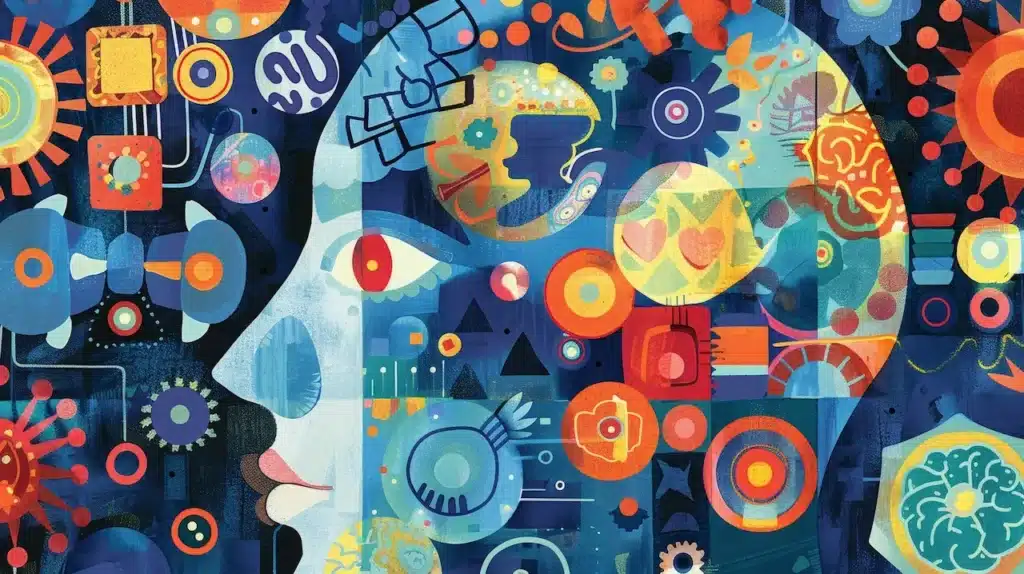Brain as a Living Supercomputer
The human brain is one of the most complex biological structures in the universe. It’s a three-pound structure made up of 86 billion neuronal connections. These neural networks collectively allow us to perceive and remember our environment, as well as reason, interact, and interact. No artificial system can replicate this. In every way, it is a living computer. The Brain Games.
The brain, for all its power and complexity, is also surprisingly easy to trick. The optical illusions, cognitive biases and sensory distortions show how our brains make assumptions, fill in the gaps and correct mistakes to create what we believe is reality. The Emmy(r), nominated series Brain Games is centred around this duality – the brain’s genius as well as its fallibility.
Brain Games goes beyond a simple television show. It is an exploration of neuroscience, geography, and how people navigate time, space, society and perception. The show uses interactive illusions and experiments to challenge us to reflect on our cognitive wiring and discover the scientific and geographic dimensions of human thinking.

The brain as a mapping device: Cognitive Geography at Work
Geographical terms are often used to describe the physical world – mountains, rivers and cities. Cognitive geography is a growing field that examines how we map our environment, organise spatial relationships and make decisions using location and perception. Your brain constantly updates and builds an internal map of your world to help you navigate physical terrain as well as social space.
Brain Games, for example, often include challenges that test spatial memories, navigation and depth perception. These experiments target the hippocampus, a deep brain region that is critical for spatial memory and navigation. London cabbies, who are known to memorise the intricate street layouts of the city, were found to have larger hippocampi. This real-world geographical skill is an excellent example of how brains adapt and evolve with usage.
Brain games show that, despite being highly efficient, our GPS can be prone to errors and shortcuts. Our brains rely heavily on mental rules of thumb, or heuristics. This can lead to errors in spatial judgement. This isn’t just a curious phenomenon; it can have real-world consequences in areas like urban planning and transportation.
Perception is Reality: The Neuroscience behind Illusion
Brain Games uses optical illusions as a way to reveal the brain’s biases. What we “see”, however, is not always the reality. Like all other senses, vision is a brain construct, an interpretation of light data collected from the eyes.
In a typical Brain Games exercise, the viewer might be asked how many basketballs are passed between players. Then, they may be shocked when a gorilla dances unnoticed through the scene. This is an example of Inattentional Blindness, a cognitive phenomenon in which the brain is focused on one task and fails to register any other stimuli. These illusions show that perception is selective and influenced by not only sensory input, but also attention, expectations, and previous experience.
This is an interesting scientific study because it touches on the complex neural interactions between the prefrontal cortices and thalamus where sensory data is filtered and translated. It is a geographical perspective that highlights how people can create subjective “mental maps” which may differ significantly from the objective environment. This concept has implications for everything, from eyewitness accounts to marketing and design.
The Brain’s social Compass: Navigating Human Geography
Brain Games is a game that focuses on the individual’s cognition. It also explores how our brains work for social interaction. Human geography, the study of people’s interactions with places and societies, has a neurological equivalent in our brains’ social circuits.
The medial frontal cortex and temporal parietal junction are important in the development of empathy, social cognition (understanding other people’s intentions), and theory of mind. In an episode of Brain Games, participants are asked whether they can judge facial expressions and guess emotions based on subtle clues. These activities demonstrate our brain’s amazing ability to decode social information – a skill that has evolved and is essential for cooperation and community.
Our social cognition can also be faulty. The brain tends to categorise information and simplify it. This leads to implicit biases, stereotypes, and groupthink. These biases influence everything from hiring to geopolitical conflicts. By examining the neural bases of these tendencies, Brain Games encourages viewers to critically reflect on their own thinking patterns. This makes neuroscience more than just educational.
Memory, Time and Mental Geography: Beyond the Present
Memory is a dynamic and reconstructive process, not a static record. The brain reconstructs memories by combining fragments and filling in the gaps with context, assumptions, or even imagination. Memory games like Brain Games reveal how fallible and fluid our memory can be.
Memory is crucial for understanding time and place from a geographical perspective. The ability to remember the past and to imagine the future is tied to the default mode network in the brain. This system enables us to imagine ourselves in other places and times, an ability unique to humans that is used for everything from historical awareness through to strategic planning.
Our memory systems are also closely tied to episodic memories that are grounded in space and timing. These spatial-temporal memory anchors are critical in how we remember where and when something happened. Mind Games challenges these anchors by rearranging events or destroying environmental cues. This shows how easily we can manipulate our internal chronogeography.
Emotions and Risk-Taking: A Geography of Risk
Making decisions is not always a logical, cold process. Emotions are a major factor in how we make decisions, evaluate options, assess risk and make choices. This phenomenon is explored extensively in cognitive neuroscience and behavioural economics. Brain games show this by using interactive scenarios and games that simulate real-world situations.
These three regions are the central players of the brain’s circuitry for making decisions. These regions evaluate risk, reward and social consequences. They influence everything from impulse control to long-term planning. Brain Games reveals hidden biases in human behaviour through games that test trust, patience and judgment.
These decisions are often made in spatial terms, such as where you live, what mode of transportation to use, or whether you invest in a particular region. Understanding how the brain makes such decisions can help us better understand urban behaviour, migration and environmental policy.
Distraction and Attention: Limits to Mental Resources
One of the greatest lessons learned from Brain Games was that attention is limited. The brain can’t process all the information it receives so it filters it, prioritises it, and ignores it. This selective focus, while essential to survival, can leave us susceptible to distraction and errors.
This means that we are often unaware of changes to our environment, a phenomenon known as Change Blindness. In experiments where the person swapped is unnoticed during a short visual interruption, it shows how little we remember under certain circumstances. This insight is important for safety, interface design and education.
Attention is also shaped geographically. With their high sensory input, urban environments force the brains to filter and calibrate constantly. In contrast, rural or natural settings often improve attention and cognitive function. This phenomenon is studied in environmental psychology and neuroscience. By highlighting patterns like these, Brain Games combines neuroscience and the study of space and place.

Plasticity of the brain and its potential: Rewiring it
The most encouraging message from Brain Games may be that the brain can adapt and change throughout your life. This neuroplasticity is what underlies learning, injury recovery, and new skill development.
The show’s episodes that focus on improving memory, training the brain, or changing perspective reinforce the idea that the brain can be rewired with the right challenges. This ability to adapt has geographical parallels. Just as cities and landscapes can be reclaimed and restructured, neural pathways can also be reshaped with effort and intent.
Jason Silva’s poetic and philosophical approach to these concepts is often reflected in his role as host. He draws connections between cognitive science and the human potential. His enthusiasm transforms neuroscience into something lively and accessible. He inspires viewers to see their mind as a flexible landscape of exploration and growth.
Conclusion: Rethinking the Geometry of the Mind
Brain Games takes you on an interactive journey through the unknown territory of the brain. Combining entertaining experiments with cutting-edge neuroscience, the show reveals fascinating and surprising ways that we perceive the world, process it, and navigate through it.
Every episode is a tour of the inner geography. From memory and mental maps to emotions and social behaviour. It bridges disciplines by combining cognitive science, psychology and human geography with behavioural economics to create a compelling story.
Understanding how our brains function is important now more than ever. brain games shows like this remind us that solving external problems often begins with looking inside: the landscape behind our ears where all decisions, perceptions, and beliefs take root.
Brain Games is a game that will challenge you as a scientist or student.
To think is not enough. You must also think about your thinking. This will help you to chart a more informed and mindful path in the world.




